The wild blue cornflower plant is known to people a long time ago. While exploring the tomb of Tutankhamun, scientists, along with gold items, found wreaths of cornflowers there. Of course, these were dried flowers, but they well preserved their color and shape.
Description
Blue cornflower - a common one or two-year-old herbaceous plant common for Russian fields and wastelands, growing from 25 cm to a meter. It is part of the family Asteraceae and is considered weedy. Has a straight or slightly branched from the middle grayish with a green tint stem with woolly lanceolate leaves. Picturesque inflorescences of cornflower are collected in basket inflorescences on long pedicels.
Flowering begins in May and ends only by August. Then seeds ripened in smooth seed boxes with tufts also ripen.
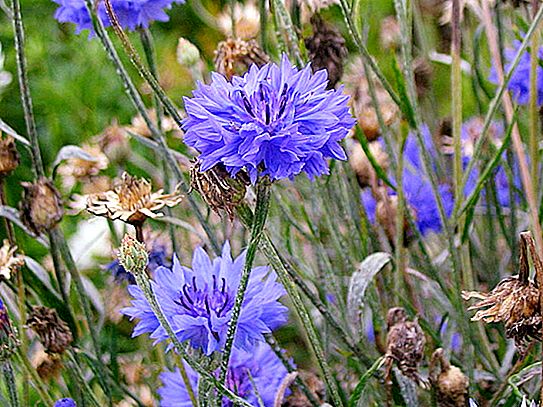
Botanists know up to 700 different types and shades of cornflowers. But the most common are plants that have baskets of light blue, blue and purple flowers. They are also used as medicinal plants.
Blue cornflower is found in the field, in meadows, along roadsides, and also among crops of rye, wheat, barley, and flax. It prefers sandy soil, but is distributed practically throughout the territory of the former Soviet Union. You will not see these flowers unless in the Far North and in deserts.
Etymology of Latin and Russian names
The Swedish botanist Carl Linnaeus gave this plant the majestic name "Kentaurea Cyanus" - in honor of the centaur Chiron, a character in Greek mythology, who cured the wounds inflicted on him by Heracles by the miraculous juice of wild cornflowers. Cornflower is sometimes therefore called a centaur flower.

Healed various diseases with the help of a cornflower and the ancient Greek god of doctors Asclepius.
What is cyanus? And this is an indication of the color of the petals, the word it means "blue."
However, the origin of the second part of the name also has its own legend. This story claims that once lived in ancient Rome a young man with that name. His favorite pastime was to spend time in the field among blue cornflowers and weave wreaths of these flowers. And he wore clothes only blue. Once, among the cornflower thickets, he was found dead, and the goddess of flowering and the reviving nature of Flora, feeling a special arrangement for the young man, turned his body into a cornflower and ordered them to be called Cyanus.
One of ancient legends told us about the origin of the Russian name of the plant. It tells of how a mermaid of a young plowman named Vasily once fell in love. She wanted to carry him into her water element, so that he was always there, but the fellow was able to resist her charms. And then the vindictive river maid avenged him, turning him into a modest meadow plant with blue flowers, which the people began to call affectionately - Cornflower.
In the areas where the blue cornflower grows, it was also called the button, hairworm, blavat, blue-flowered, cyanotic, patchwork, etc.
The use of blue cornflower in herbal medicine and traditional medicine
Decoctions and infusions based on blue cornflower are one of the oldest medicines known to the people. Healers believe that the greatest useful power of a cornflower is in the extreme petals of flowers.
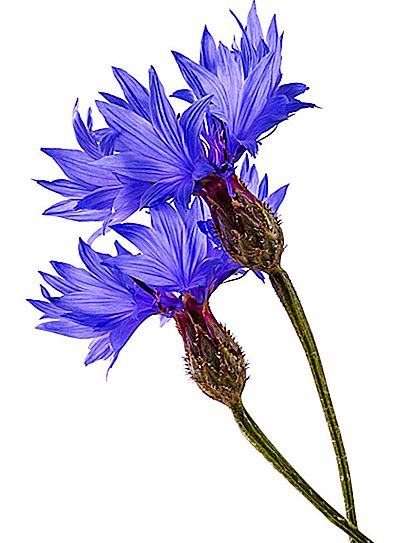
Modern studies have proven the presence of glycosides of centaurin, cyanine and cyanidine in the flower petals of this plant. Rare substances such as lead, selenium, boron, aluminum, and quinine were also found there. This plant also contains tannins with vitamins (ascorbic acid and carotene), organic acids, mineral salts, a number of fats and mucus.
For internal use in the form of medicinal infusions, cornflower is useful as an antispasmodic, diaphoretic and antipyretic. Cornflower is a well-known diuretic (diuretic). It is also used as a mild sedative to soften a strong heartbeat.
In combination with nettle, calendula flowers, pansies, walnut leaves and horsetail grass, cornflower helps in the treatment of dropsy, liver disorders (like choleretic) and nervous diseases. Chronic kidney and urinary tract diseases such as cystitis and pyelonephritis are also treated with cornflower infusions.
The scope of application of dried cornflower flowers as a part of collections for external treatment is very extensive: these are long-healing wounds, boils, warts.
Eye inflammation (blepharitis, conjunctivitis), lacrimation, eye fatigue are usually treated with a collection, which includes (in one part) the flowers of eye, cornflowers and elderberries.
In the manuscript of the XYII century, information was also found about such therapeutic use of cornflower:
We eat the seed of cornflowers, crushed, sprinkle with warts, tacos will pull the root out of them and destroy them, then Nicoli will not grow in that place
Contraindications
Using cornflower for medicinal purposes, we must not forget that this medicinal herb, because of its small but toxicity, is not recommended for pregnant women and young children. Since the chemicals that make up the cornflower thin the blood, its use is contraindicated in diseases that may be accompanied by bleeding.
In addition, the cyanogenic glycosides that make up this plant can accumulate in the body.
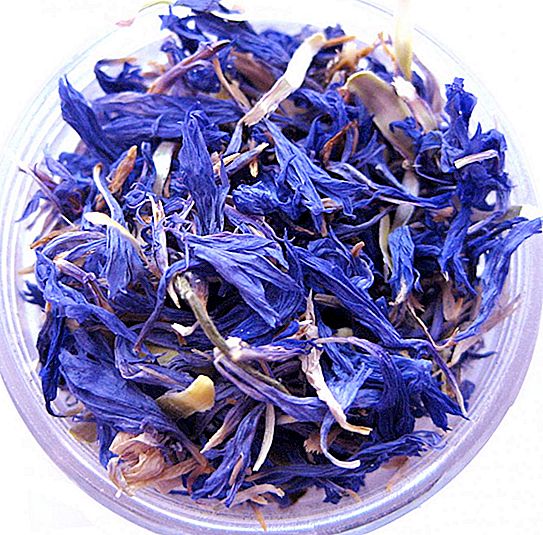
Chronic patients taking other medicines should also be careful: the interaction of the chemical components of cornflower with other drugs has not been studied much. In any case, do not experiment on your health, first consult with a specialist.
How to make an infusion
The infusion is prepared as follows: take a full teaspoon of dried flowers, brew it with boiling water (1 glass). Then close and insist for an hour. Take this infusion three times a day for 15-20 minutes before eating. At one time relies half a glass of filtered liquid.
The same infusion can wash trophic ulcers and other wound surfaces, as well as use as baths for joint diseases and just to relieve foot fatigue.
Compresses from a cooled infusion - 30 g of cornflower, brewed with 0.5 liters of water and infused for an hour - are practiced in the treatment of varicose veins.
To wash the eyes, the infusion should be made more concentrated. In this case, a tablespoon of medicinal raw material is poured with boiling water.
Other cooking methods
If you brew a teaspoon (with a slide) of cornflower flowers with a glass of boiling water and let it stand for half an hour, you get a drink that quenches your thirst, which will also help with a cold and relieve headache.
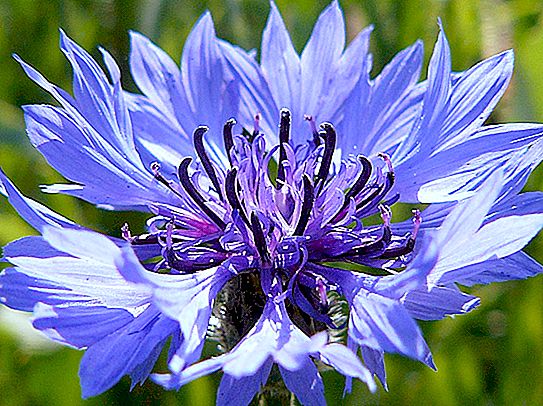
Preparing vodka tincture from cornflower, which is considered to be the most effective in the treatment of certain diseases, is quite simple: medicinal raw materials (one part) are poured with ten parts of vodka, infused for 2 weeks and filtered. Accepted for genitourinary and renal diseases before meals, 20 drops dissolved in water. Tincture prepared in this way can also be used as a skin rubbing lotion.
Magic use
In ancient times, it was believed that this plant has a strong positive energy, aimed at the destruction of evil, wherever it starts up. But you can’t use cornflowers as a charm of the room, they were used only as a tool to combat harmful vibrations. Therefore, leaving these flowers in the room for the night, the next morning they were cleaned.
To remove the spoilage or evil eye from a person from the flowers collected in the full moon, cornflower was infused: the raw materials were poured with hot water and insisted for two hours. Then added a little tops of hyssop officinalis, wormwood and husk of garlic. It was believed that this infusion would be especially strong if you leave it at midnight under a glowing moon.
In the morning, the infusion made in this way could wash the sick, as well as spray the rooms.
During field work, cornflowers were planted along the edges of fields with wheat or rye to protect the future crop from damage or the evil eye.
How to harvest
For medicinal purposes, cornflower flowers are collected during the entire flowering pore. Whole, fully blossomed flower inflorescences-baskets are torn off, from which corollas of those flowers are pulled out that are located on the edge. In the composition of medicinal raw materials, the content of internal tubular flowers is unacceptable.
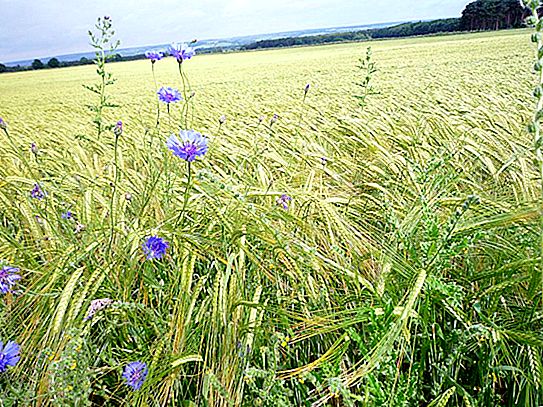
The collected flowers are immediately laid out on blank sheets of paper or canvas. Plants can be dried in a dryer at a temperature not exceeding 50 °. The petals of flowers that have lost their color when dried will no longer be medicinal. They should be removed from finished raw materials.
Dry cornflowers are stored in a sealed container without access to light and moisture.
Dry flowers are odorless, while the prepared infusions taste bitter. The period of use of flowers as a medicinal raw material is two years.
Cornflower roots, which are also used in folk medicine, are harvested in the same period as the flowers. They are cleaned and dried, as usual. The roots will retain their properties if you keep them in cardboard boxes or packages of paper (canvas).




